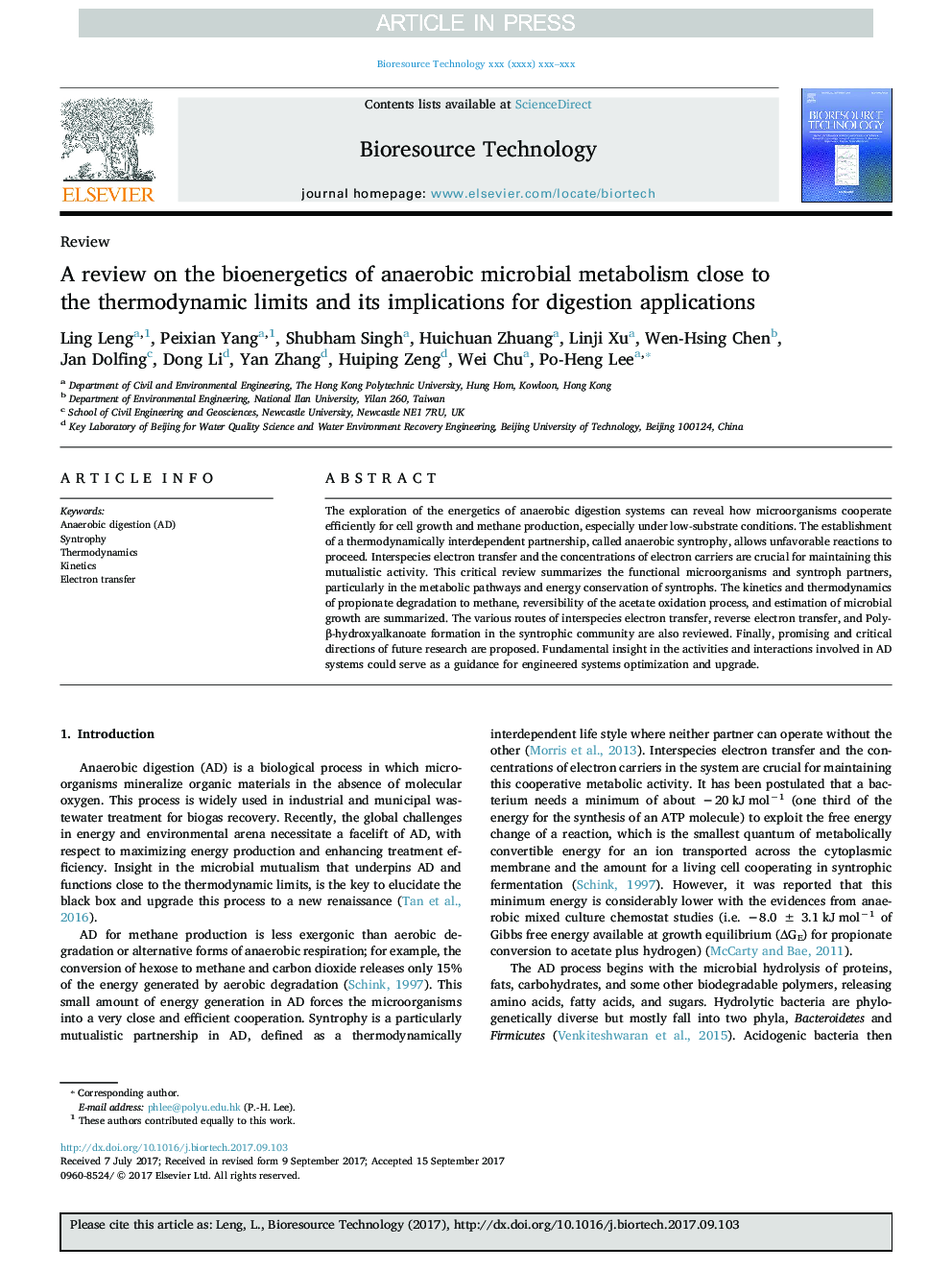| Article ID | Journal | Published Year | Pages | File Type |
|---|---|---|---|---|
| 7069273 | Bioresource Technology | 2018 | 12 Pages |
Abstract
The exploration of the energetics of anaerobic digestion systems can reveal how microorganisms cooperate efficiently for cell growth and methane production, especially under low-substrate conditions. The establishment of a thermodynamically interdependent partnership, called anaerobic syntrophy, allows unfavorable reactions to proceed. Interspecies electron transfer and the concentrations of electron carriers are crucial for maintaining this mutualistic activity. This critical review summarizes the functional microorganisms and syntroph partners, particularly in the metabolic pathways and energy conservation of syntrophs. The kinetics and thermodynamics of propionate degradation to methane, reversibility of the acetate oxidation process, and estimation of microbial growth are summarized. The various routes of interspecies electron transfer, reverse electron transfer, and Poly-β-hydroxyalkanoate formation in the syntrophic community are also reviewed. Finally, promising and critical directions of future research are proposed. Fundamental insight in the activities and interactions involved in AD systems could serve as a guidance for engineered systems optimization and upgrade.
Related Topics
Physical Sciences and Engineering
Chemical Engineering
Process Chemistry and Technology
Authors
Ling Leng, Peixian Yang, Shubham Singh, Huichuan Zhuang, Linji Xu, Wen-Hsing Chen, Jan Dolfing, Dong Li, Yan Zhang, Huiping Zeng, Wei Chu, Po-Heng Lee,
